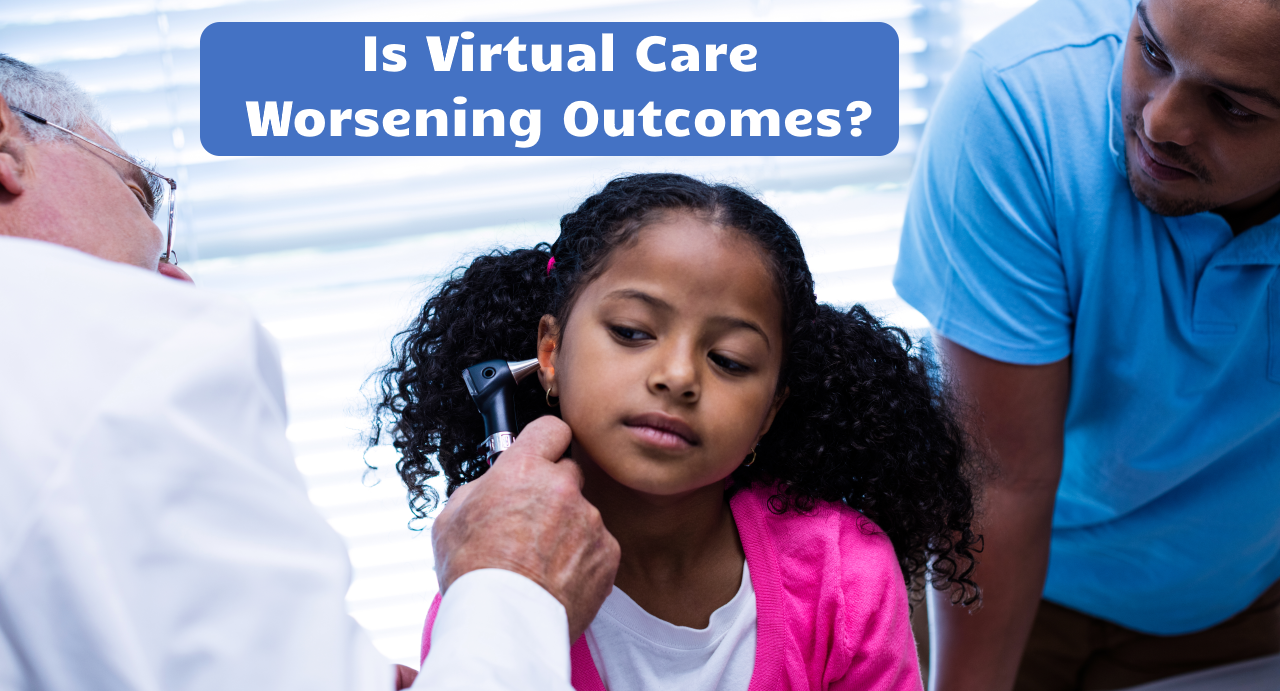The Covid-19 health crisis accelerated the wide-spread adoption of virtual care to quickly get care to the patients while keeping physicians, staff and patients safe. But after many months of some patients being seen “virtual only”, the question is asked: Is virtual care worsening outcomes?
A Simple 4-step Care Process
I’ve been working in telehealth since 2003 and have been involved in the launch and implementation of telehealth services for over 10 years. My prediction was always that by 2030 we’d be seeing a use of telehealth for up to 70% of all visits. Obviously this timeline was accelerated from 10 years to just 10 weeks, if even, though the numbers certainly didn’t stay at the 90% level of the April and June.
My anticipation was that over the next 10 years, we’d also be developing additional mobile and remote testing capabilities to catch up to the reliable feature set of video chat solutions. The rapid push into virtual care in response to the health crisis actually may end up hurting the telehealth industry for that reason.
While quite a few patients are seeing their doctor in person, still, a large number of patients have opted to only be seen virtually and may even be afraid to come into the clinic for a number of good reasons. Yet it is those patients who the clinicians can only see over video (or even worse, only hear over the phone), trying to manage this patient’s health, while, essentially, operating in the dark.
The delivery of care, when viewed through the eyes of a systems engineer, becomes a quite simple 4-step process: an assessment (1) leads to a diagnosis (2) followed by the development (3) and implementation (4) of a treatment plan.
We need better tools to aid with the assessment and (as part of the implementation) the adjustment of the care delivery strategy.
Insights vs. Intuition
Over the years, fewer and fewer diagnoses, except for the most common ailments, are being made without consulting a test: whether that’s a blood count, a radiological examination — such as an x-ray or CT-scan — or a specialists’ evaluation, such as an ECG by a cardiologist. Just looking at the patient and taking their weight and blood pressure typically does not yield the information necessary to make a confident diagnosis. Oftentimes a more intensive or invasive test is needed to make a confident diagnosis and/or decisions on the care plan.
Tests and exams are not just good for diagnosis. They are also important when it comes to ensuring the engagement by the patient to follow the care plan and to make adjustments, especially to medications, to ensure the best outcomes.
Therefore, in the absence of convenient ways to exam and test patients, physicians may not be able to provide as good as care as in-person visits, potentially leading to worse health outcomes for some patients.
The Limitation of Virtual Care
As people are evaluating the pros and cons of virtual care, there has been a lot of talk lately about vaccines or procedures that obviously need to be done in person. The question being raised is:
Does telehealth help keep patients on track to get in-person care,
or does it actually hinder outcomes because patients take
a telehealth appointment and then forego things
that it takes an office visit to deliver?



On the other hand, this is no different then common referrals to specialists. Few primary care practices offer in-house access to x-rays, EKGs, etc.
My recommendation
For my recommendation on how to tackle this challenge, I go back to one of my favorite notions that “every system is perfectly designed to get the results it gets”. If we want to get patients to actually take care of those “in-person” tests and treatments, we need to design a new system around it. A system that makes it convenient and easy and an overall good experience.
The solution is not to ban virtual visit because that would be like throwing out the baby with the bath water. The solution could include technology to obtain vital signs or to involve existing medically trained personnel that are already in the community, such as EMTs and home health staff.
Also, mobile technology, such as mobile x-rays, mobile ultrasounds, and mobile phlebotomists are increasingly available across the US to further enable full care delivery to the home.
What we need, and I’m working with one of my clients on that exact aspect, is a process that will track, encourage and support patients to take care of these things. In addition to a tele-rooming process (as I talked about last week) we also need a better post-visit process.
We need a post-visit process that increases the likelihood of patients following through with their care plan. Messages, follow-up calls, emails – whatever is most convenient. Because the magic of outpatient medicine does not happen during the visit, but afterwards, when clinicians successfully convinced patients to follow their advice – either for treatment or for getting more testing.
Eventually, within a few years, we will have a health care delivery system that includes consults, exams, and tests that can be conducted and administered to patients in the comfort of their home or place of work.
What’s important to note is that oftentimes the decision is not between “virtual care” and “in-person care”, but rather between “virtual care” and “no care”. And in the latter scenario, virtual care wins every time.








To receive articles like these in your Inbox every week, you can subscribe to Christian’s Telehealth Tuesday Newsletter.
Christian Milaster and his team optimize Telehealth Services for health systems and physician practices. Christian is the Founder and President of Ingenium Digital Health Advisors where he and his expert consortium partner with healthcare leaders to enable the delivery of extraordinary care.
Contact Christian by phone or text at 657-464-3648, via email, or video chat.







Leave A Comment